NOVEMBER 16, 2021: The Douro Valley continued to delight us. Today was Mark’s birthday, and as a birthday treat, we had scheduled a guided hike in the hills of the valley. Unfortunately, with my bad knee, I did not participate.
We woke up in the hotel in Folgosa in a room with a view of the river, but nothing but fog was visible in the morning. We were the only ones in the hotel dining room for breakfast. David and I enjoyed the coffee and baked goods, while Mark enjoyed the fruit platter.
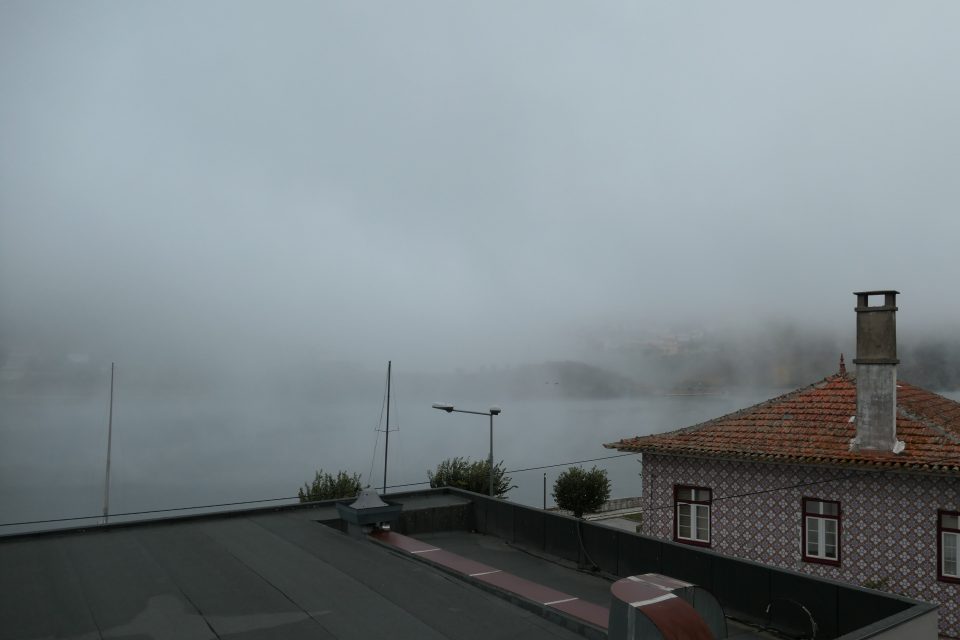
The view from our room in the morning. The mountains are hidden by the fog.
We were scheduled to meet the guide at 11:00. This gave us some time to see a few things on the way. Our first stop was to take care of business. The hotel receptionist translated the parking ticket we received the day before. Turns out that you need to pay the two euro fine at a local office, or at one of the digital parking meters throughout the city. It can only be done in that city itself, without receiving a stiff penalty. So we returned to Peso da Régua, went to the office and paid the two euros. Now we were free to start our day.
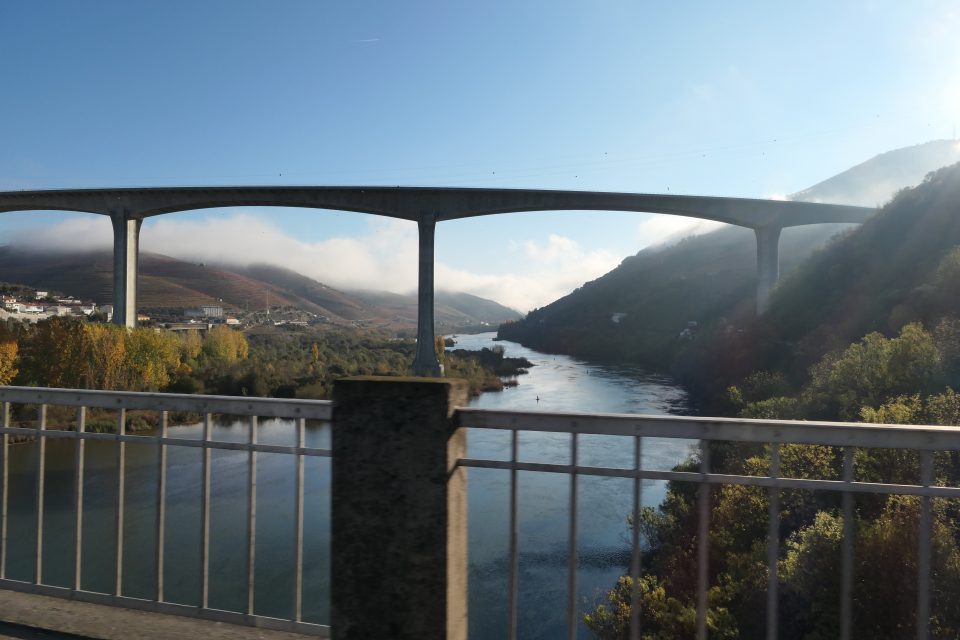
Returning to Peso da Régua.
From Peso da Régua, we drove Route N222 along the river to Pinhão. They have a train station decorated with azojules tiles depicting different scenes from the Douro Valley. Unfortunately, the area was being renovated and we could not approach. We managed a photo from the entrance of the construction site.
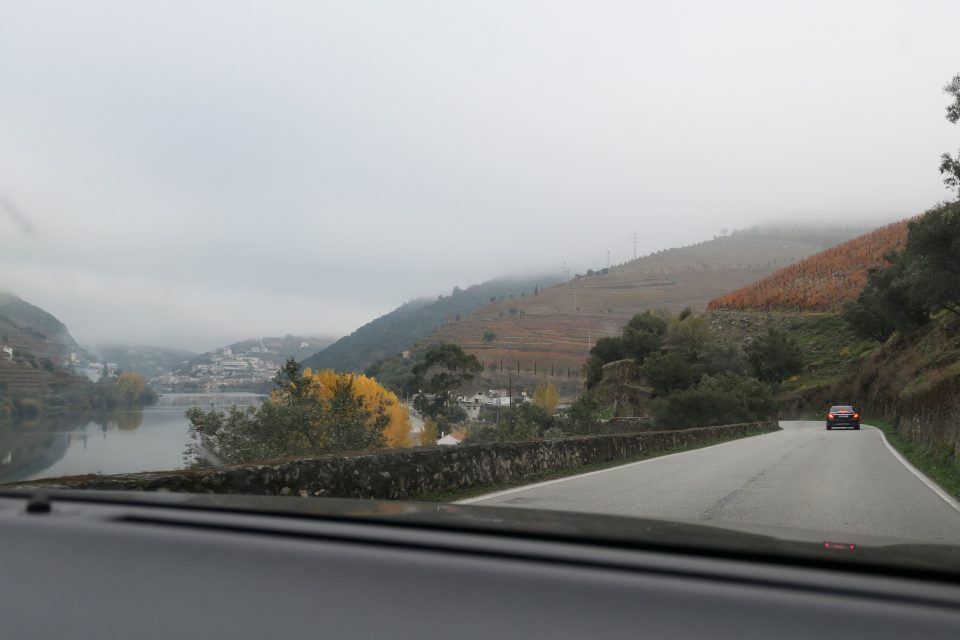
Driving along the Douro 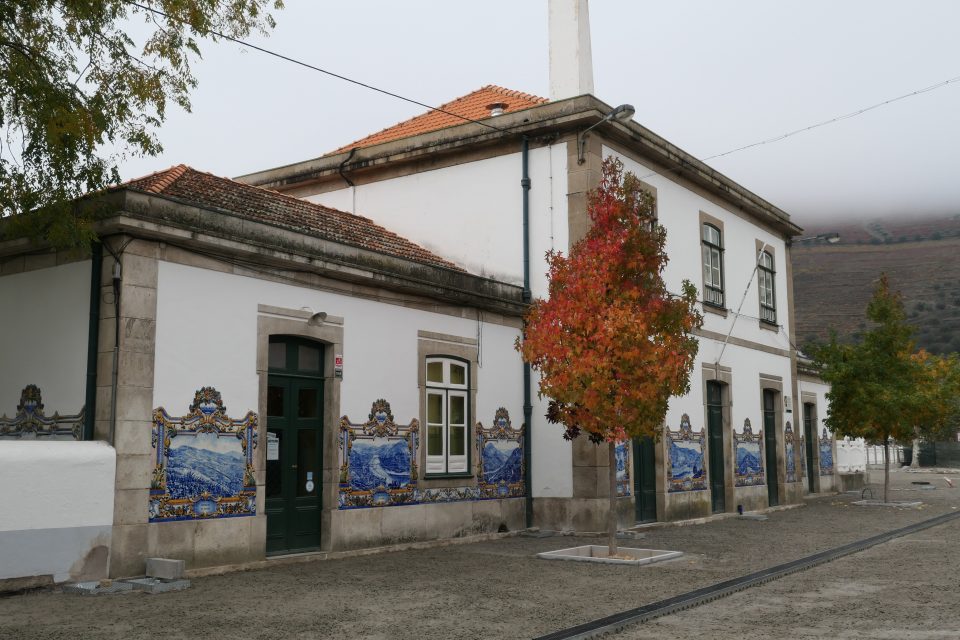
The Pinhão train station
We had originally scheduled to go next to another lookout – Casal de Loivos. Since we had spent time going to pay the traffic ticket, we decided to skip this to make sure we got to the guided walk on time. However, in leaving Pinhão, we took a wrong turn and found ourselves on the road to the lookout. We decided to have a quick look. We climbed the u-turns up the mountain, but about a kilometer down the road, and not far from the lookout, the fog became so thick, we realized that there was no point in continuing. Visibility was too low. We turned around and drove to Ervedosa do Douro, the village where the guide was waiting to meet us.
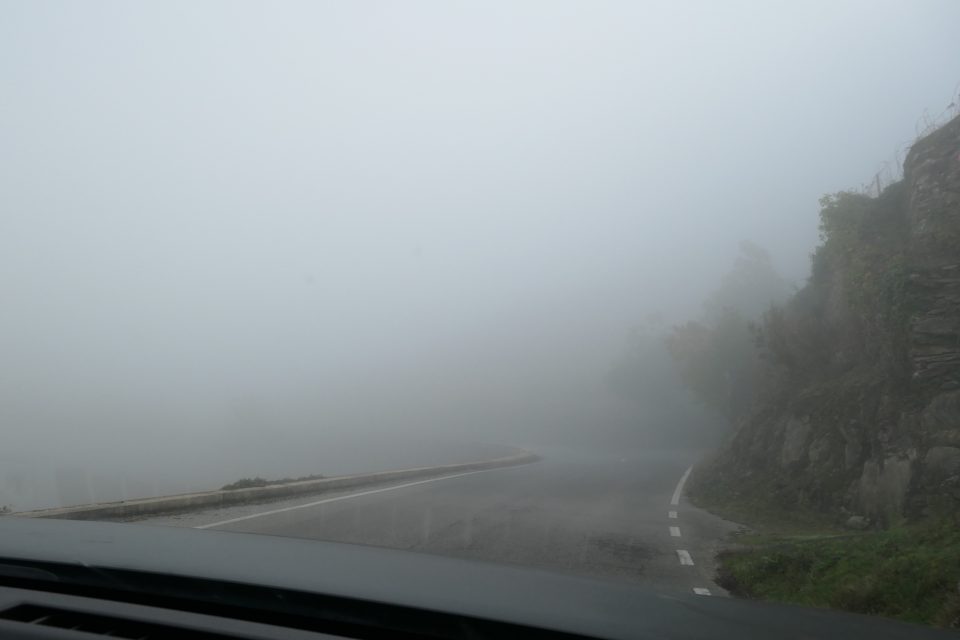
No visibility
Ervedosa do Douro is a village high up in the mountains. All the locals are involved in the wine industry. Mark and David left with the guide for the hike. I sat in a local coffee shop and worked on my blogs. In the coffee shop, a TV screen played reruns of the Portuguese The Voice, and Master Chef. Except for the language, the format seemed identical to what I watch in Israel. Mark would send me occasional photos of the amazing views they were seeing.
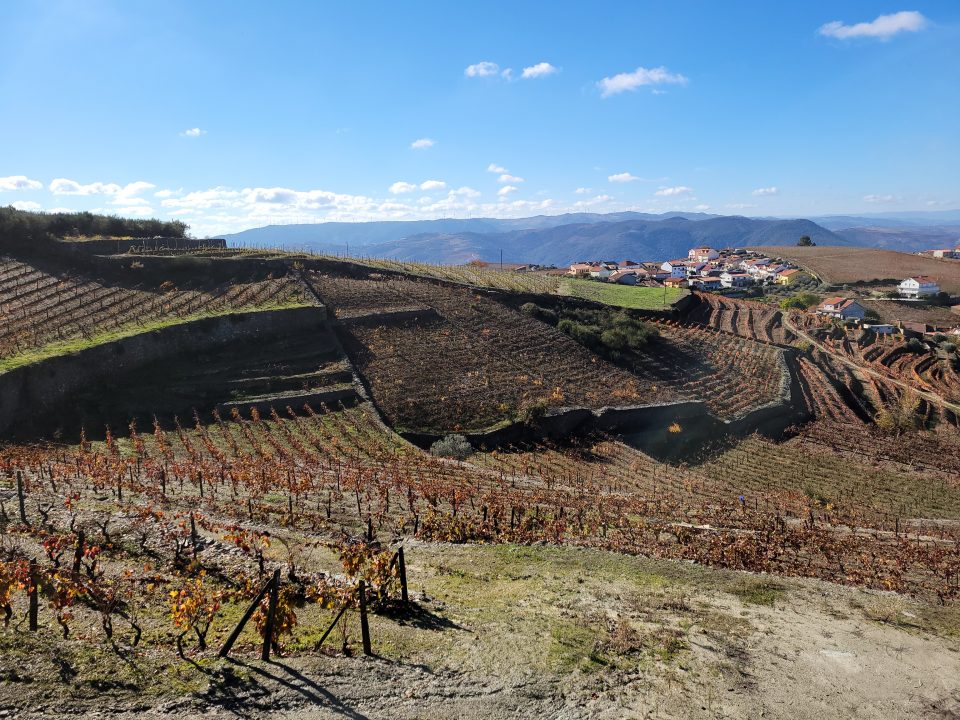
Views from the hike 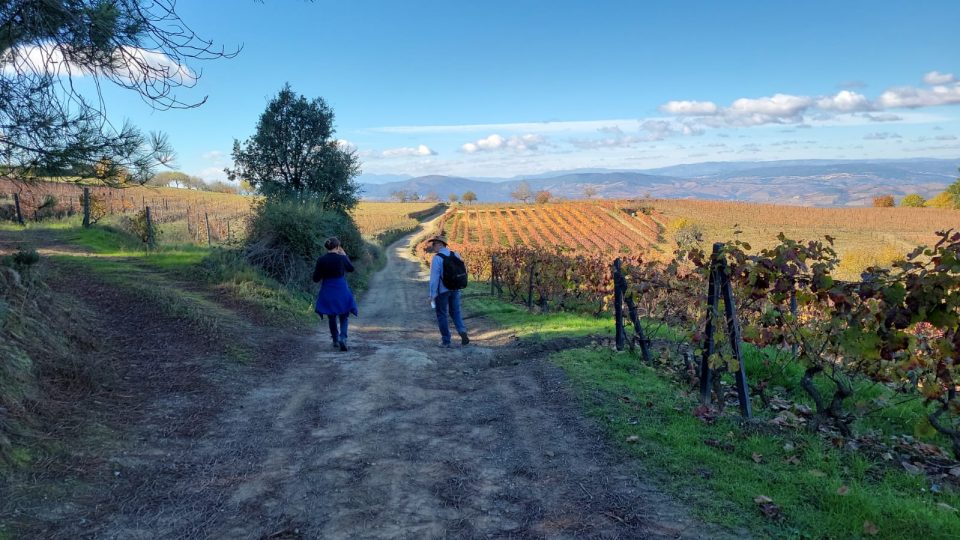
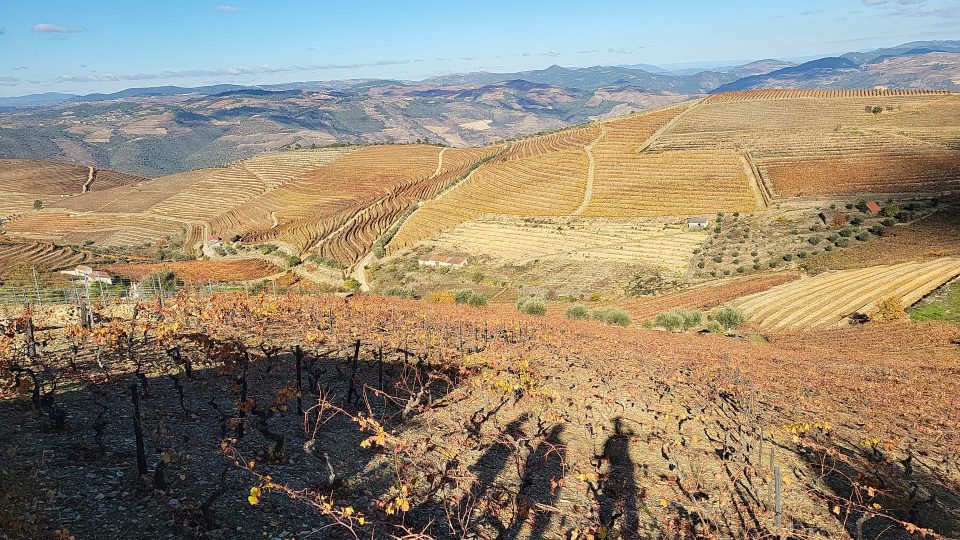
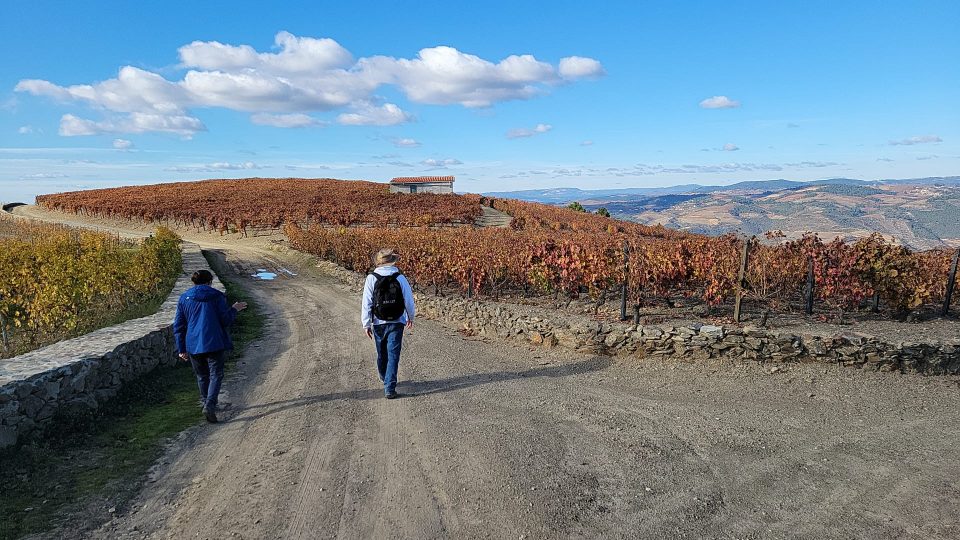
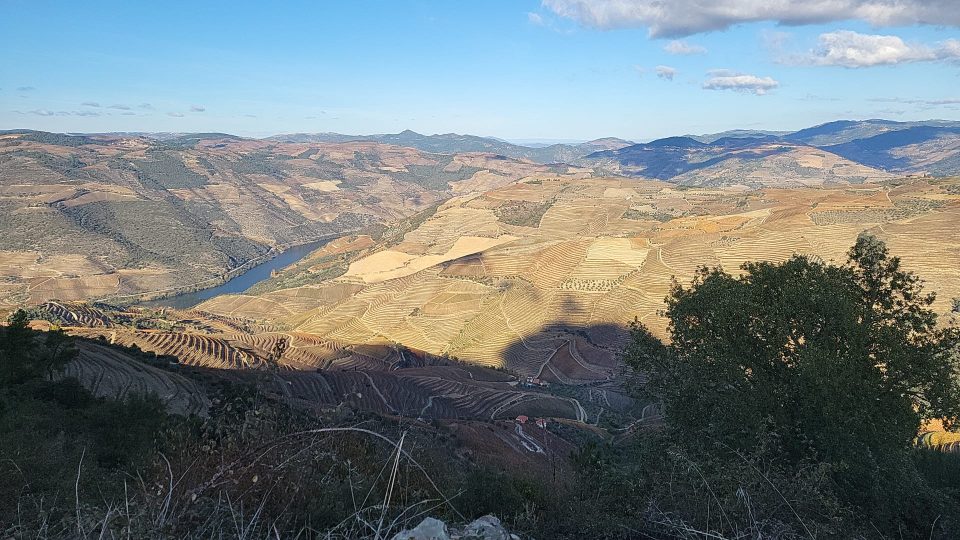
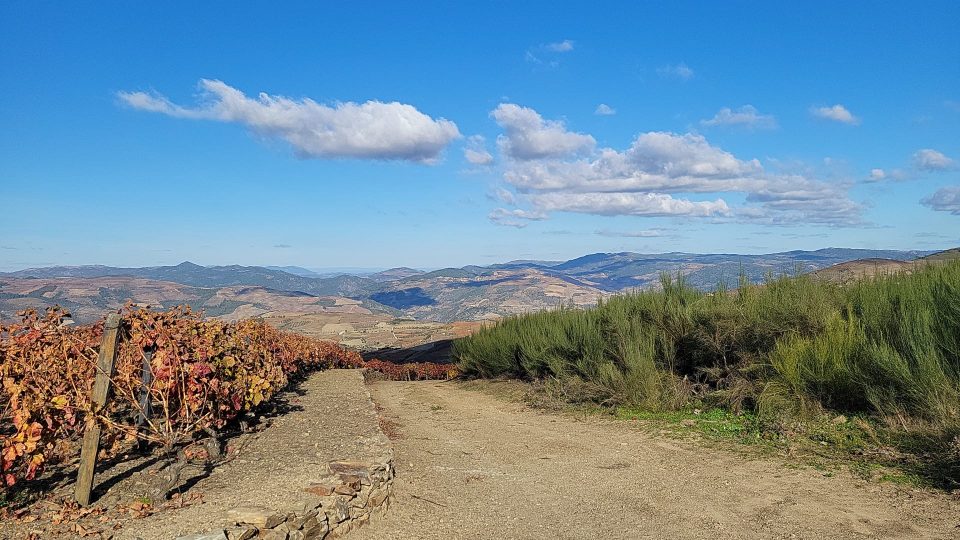
We had signed up for a 5 km, 2 hour hike. The guide kept walking and walking, and only because Mark told her we need to continue our trip, did they return after 10 km and over four hours (yes, I did send WhatsApp subtle reminders to Mark that it was getting late). It had been remarkable – a hike to remember. A wonderful birthday treat.
They learned many things from Sylvia, the guide, about the history of the area and about the wine making process. She said that wine here is like a religion – everything is wound around the wine making process. There is tension between those who use the older, traditional methods and those who bring in new technology. She showed them, that the traditional method to grow the grapes is on horizontal terraces on the mountain side. The vineyards that are planted in vertical rows, spread far apart, use modern technology. The rows are placed in such a way to make it easy for machines to access. Traditional winemakers (like her 70 year old father who still works in the vineyard every day) do everything by hand.
She also confirmed my suspicion about the fall colors. When looking at the vineyards, you see patches in different colors – there will be a patch of red, next to a path of orange, next to a patch of yellow. Since the patches are distinct, I thought that perhaps different varieties of grapes, change to different colors. This turned out to be true.
She also talked a lot about how life has changed over the past 40 years. She was born into a house with no running water. Transport to the fields was on a mule. The harvested grapes were carried on people’s backs. The family only bought their first car in 1995. Today, they have all the modern amenities. Even public fiber internet was available for free in the cafe I sat in while waiting for them to return from the hike.
Another topic that she mentioned several times, is the strong role the European Union plays in the region. Basically they decided that this area should grow grapes, and nothing else. Another area in Portugal was designated for olives, etc. They developed the infrastructure, and helped the farmers fight against the local cartels. In short, in exchange for the help, they also have lots of power and control.
Once Mark and David returned, we were invited to her parent’s home to taste some port, but we were running late – we still had one more stop to go and a two-hour drive to reach our Airbnb for the night. I did not want to drive the narrow winding roads in the dark. We decided that we would continue on our way, but not before she gave us a bag full of goodies – a bottle of port, a bag of almonds and a cinnamon cake.
Our nest stop, about 20 minutes down the road was São João da Pesqueira. We had high expectations, because the municipality had created a digital map showing the location of the Jewish heritage sites. We walked to the historic center, and first came across a large plaza. Beautiful but deserted.
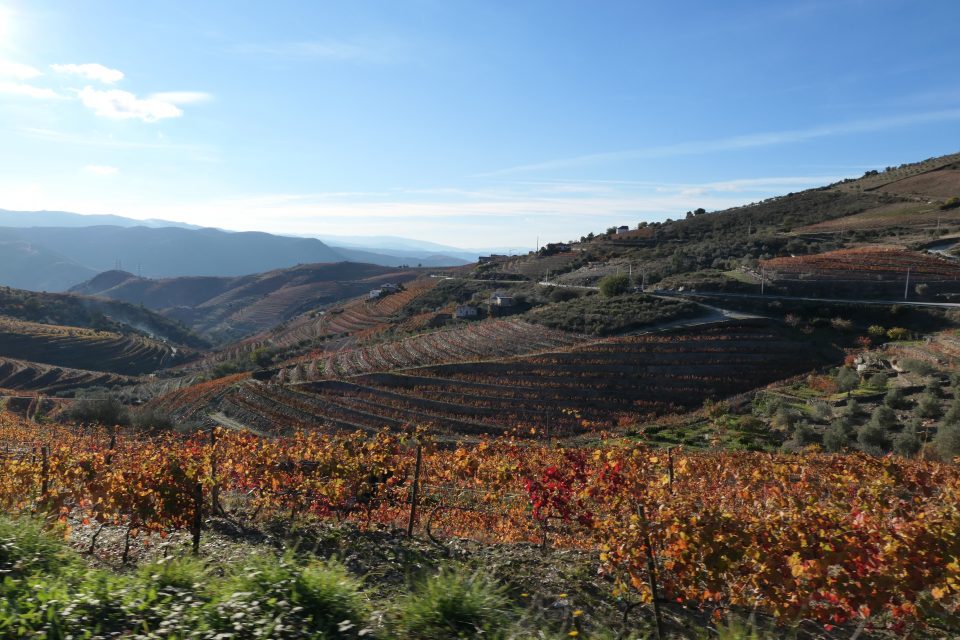
The road to São João da Pesqueira 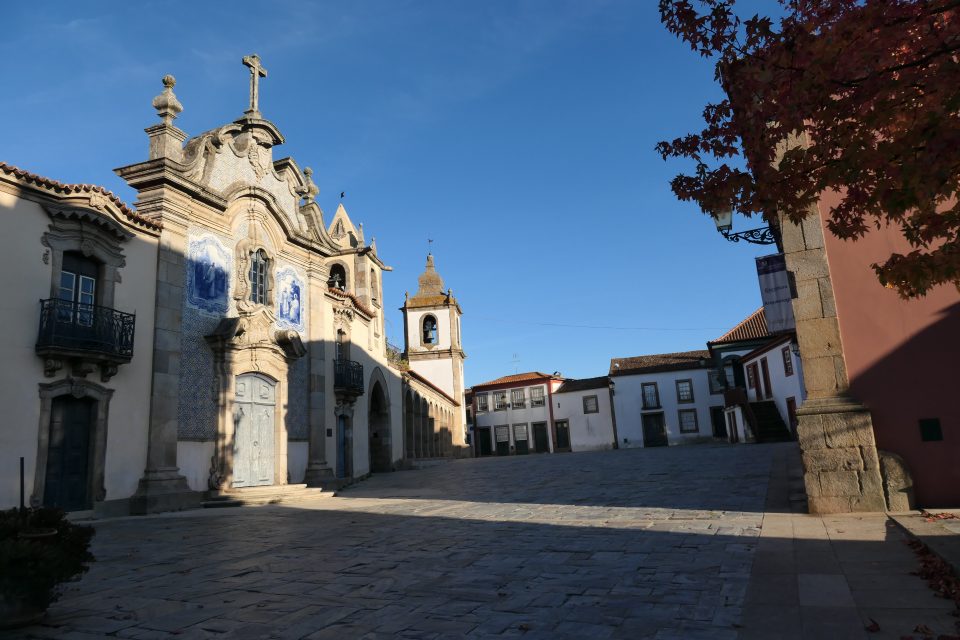
São João da Pesqueira
Our destination was Rue dos Gatos, street of the cats. This was a small, narrow alley in the heart of the old district. We went to every destination on the digital map, compared what we saw to the pictures they provided, but were stumped. We were seeing what we were supposed to be seeing, but what was Jewish about it? It was mostly restored homes. Maybe these were the locations that were known to house Jewish families in the past. Aside from one little sign, that said this area was the Jewry, nothing was explained. It was frustrating not to understand.
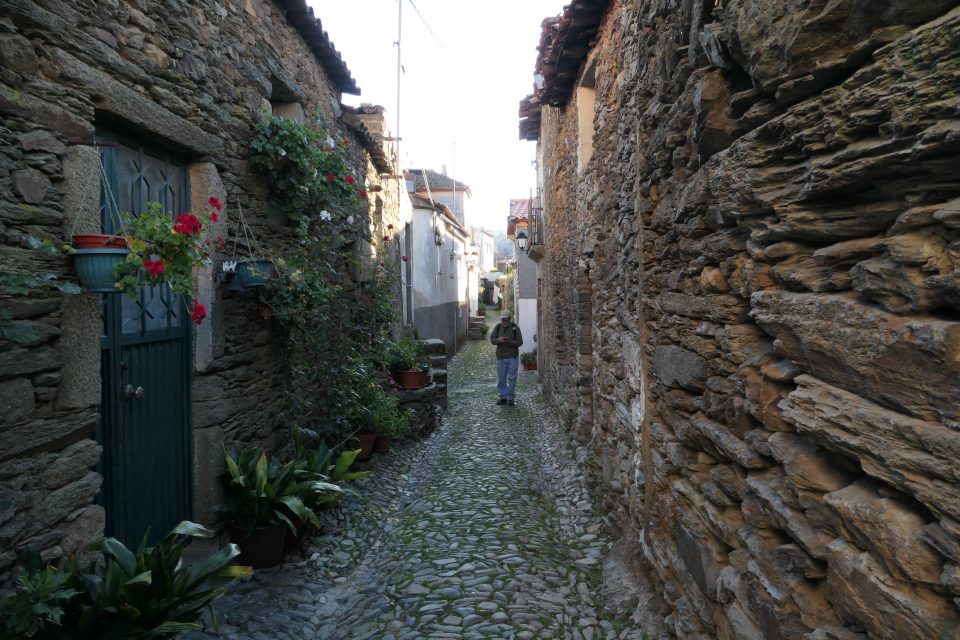
Rue dos Gatos
Since the map was created by the municipality, we thought perhaps tourist information might know more. We stopped there on our way out of the city, but all they could tell us was the location of the Jewry. They said if you look closely you will see signs. We looked closely, but saw no signs. I wished we understood better what we had been seeing.
It was almost 4;30, and we had an almost two hour drive to Bragança, our destination. Bragança is in the very northeast of Portugal, very close to the Spanish border. We had only about one hour of daylight left before dark.
We followed the GPS navigation along the most beautiful road. Winding in and out and up and down the mountain. Scenery was spectacular. At one point, we again saw the Douro River, but now it was in a narrow canyon with much steeper slopes. Here the land was natural and wild, no longer the cultivated fields.
Although the views were magnificent, this was not a road you wanted to be on in the dark. I knew we would eventually reach a highway, where night driving will be much safer. Luckily, it was perfect timing. Just as it was getting very dark, we reached the highway. And dark it was – the highways here are not lit up like the ones in Israel. The only lights were the occasional lights of scattered villages.
We reached our AirBNB in Braganca. In making reservations, I usually choose places that are in the historical districts. This is turning out to make parking much more difficult. Luckily we found a spot nearby. The apartment was also two flights up without an elevator, difficult with all our stuff. Lesson learned – next time pay more attention to parking and elevators when ordering accommodations.
Looking forward to seeing Bragança in the morning.
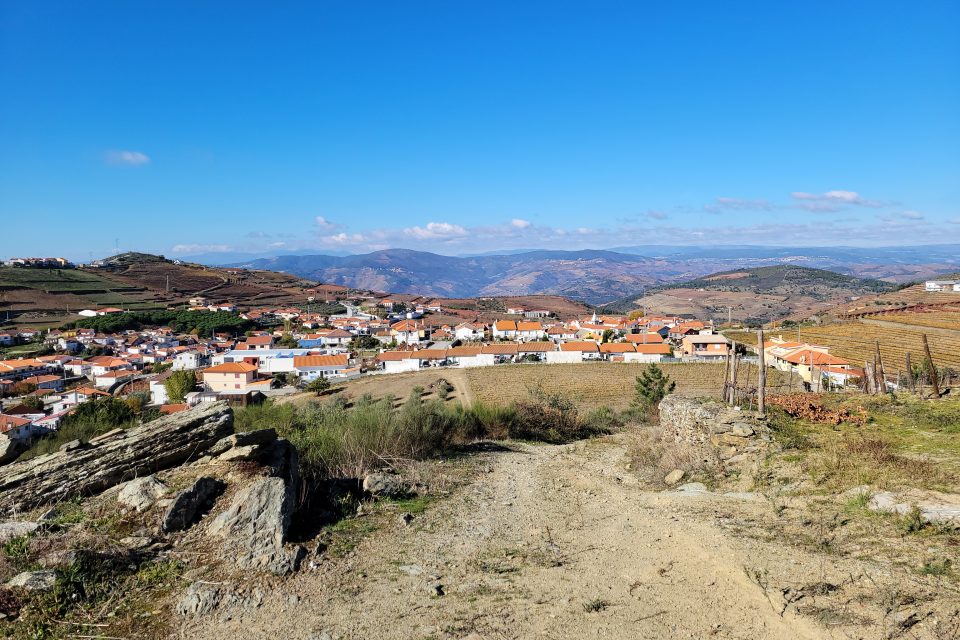
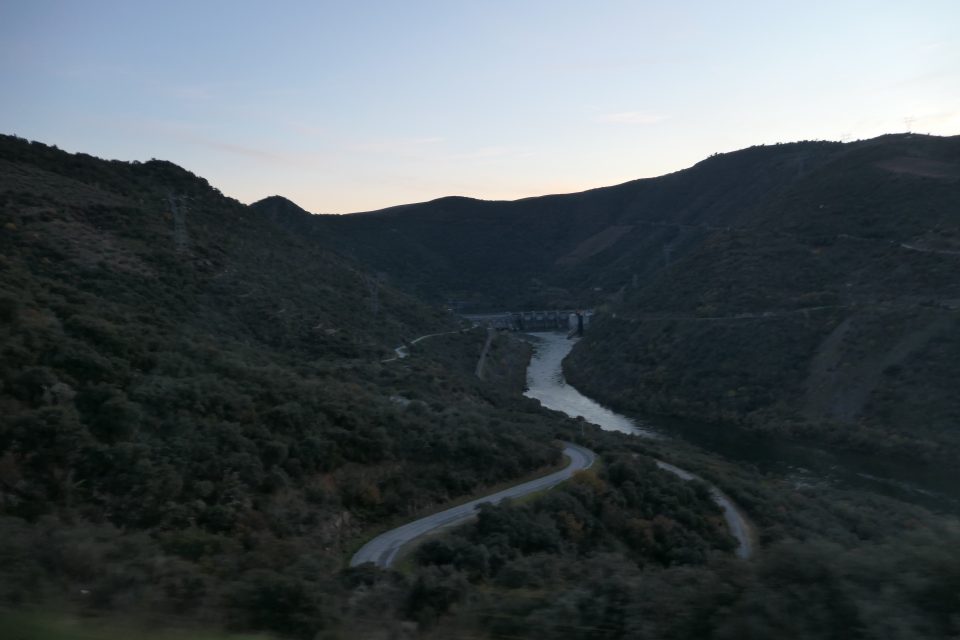
Great birthday hike for Abba
Yes it was a lot of fun. Just too bad that Sabta couldn’t join also.
What a nice birthday idea. Pics are beautiful!